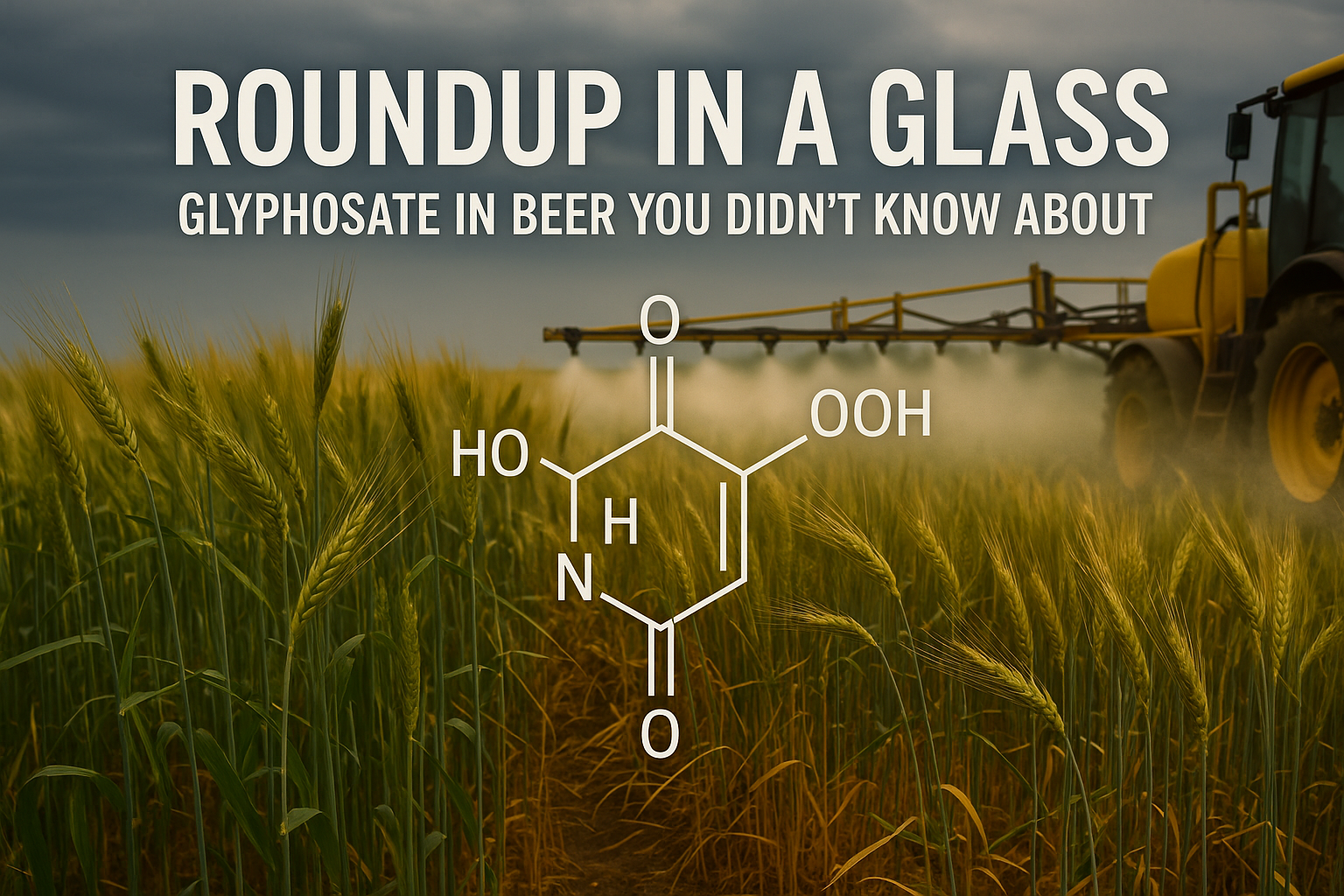Roundup in a Glass: Glyphosate in Beer You Didn’t Know About
The Hidden Weedkiller in America’s Favorite Drink What Millions of Beer Lovers Don’t Know About Glyphosate Contamination
Roundup in a Glass: Glyphosate in Beer You Didn’t Know About
The Hidden Weedkiller in America’s Favorite Drink What Millions of Beer Lovers Don’t Know About Glyphosate Contamination
Beer has been part of human culture for thousands of years. In the U.S. alone, more than 6.4 billion gallons of beer are consumed every year. That’s over 200 million barrels of beer, equal to 165 million kegs flowing through taps, coolers, and backyard barbecues nationwide. But behind the frothy head and golden bubbles lies a bitter truth: many beers contain trace amounts of glyphosate — the active ingredient in Monsanto’s Roundup herbicide.
How Glyphosate Gets Into Your Beer
Glyphosate is one of the most widely used weedkillers in agriculture, sprayed on fields of barley, wheat, and even hops. Because these grains are key ingredients in beer, contamination creeps into the brewing process. Even organic farms can be affected, since glyphosate can drift through the air, contaminate soil, or leach into water systems.
In a widely cited U.S. PIRG study, 20 popular beverages (15 beers and 5 wines) were tested. Glyphosate was found in 19 of them. Big names like Budweiser, Coors Light, Miller Lite, and Heineken were all on the list.
What the Numbers Show
Some of the measured glyphosate levels include:
- Tsingtao Beer: 49.7 ppb (parts per billion)
- Coors Light: 31.1 ppb
- Miller Lite: 29.8 ppb
- Budweiser: 27 ppb
- Samuel Smith Organic Lager: 3.5 ppb
- Inkarri Estate Organic Wine: 5.2 ppb
The highest finding in the study was 51.4 ppb in Sutter Home Merlot wine.
Why It Matters
Supporters of glyphosate claim these levels are “too low” to cause harm, but many researchers disagree. Even at low doses, glyphosate has been linked to:
- Gut microbiome disruption – killing off beneficial bacteria and fueling gut imbalance.
- Hormonal interference – acting as an endocrine disruptor.
- Potential cancer risk – glyphosate has been classified as a probable human carcinogen by the World Health Organization’s International Agency for Research on Cancer (IARC).
- Cumulative exposure – beer isn’t the only source. Glyphosate has been found in cereals, bread, oats, and even honey. The concern isn’t just a single pint; it’s the long-term, everyday exposure that adds up.
The Regulatory Gap
Despite beer being the most popular alcoholic beverage in America, the EPA does not set specific limits for glyphosate in beer or wine. That means millions of Americans are drinking it every year without any meaningful safety thresholds in place.
What You Can Do
- Choose wisely: While even organic brands have tested positive, they generally contain much lower levels. Supporting small breweries that prioritize regenerative or glyphosate-free sourcing helps shift the market.
- Ask questions: Breweries and vineyards respond when customers demand transparency about farming and ingredient sourcing.
- Limit exposure: Beer should be enjoyed in moderation, but knowing what’s in your glass is the first step toward making an informed choice.
A Functional Healing Approach
At Executive Functional Healing LLC, we believe awareness is power. The more we uncover hidden toxins like glyphosate in everyday foods and drinks, the more we can take back control of our health. If you’re struggling with gut issues, fatigue, or chronic symptoms that don’t seem to go away, glyphosate exposure could be part of the bigger picture.
If you want to get to the root cause of your health challenges, schedule your free 15-minute consultation today. Call or text 817-992-8128 or visit www.executivefunctionalhealing.com.

